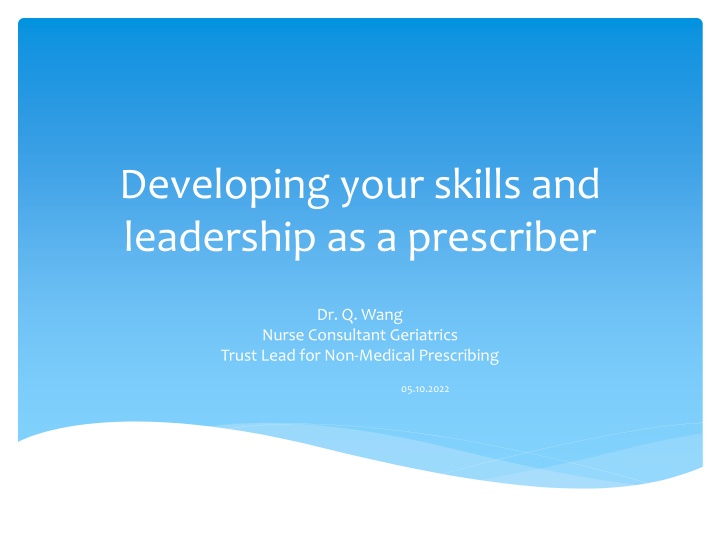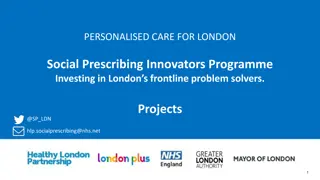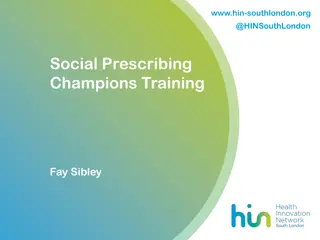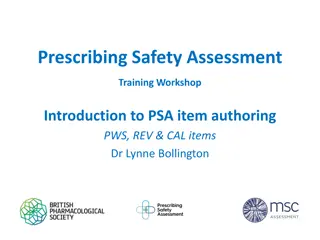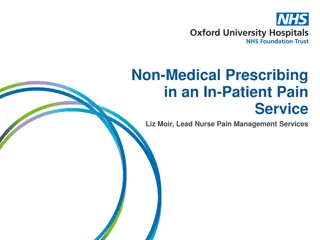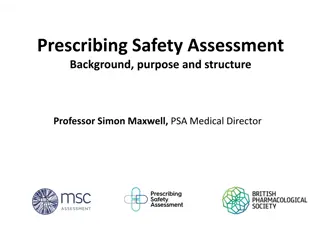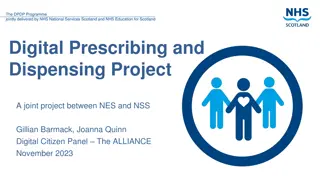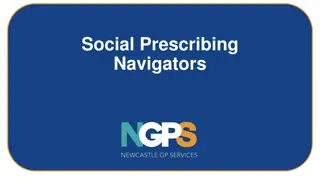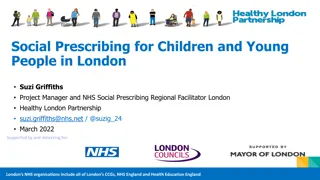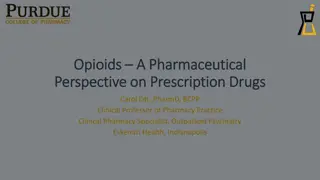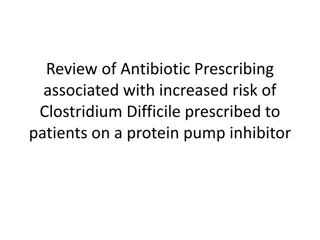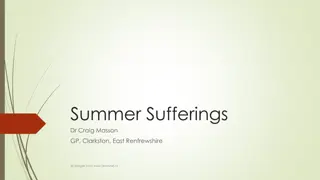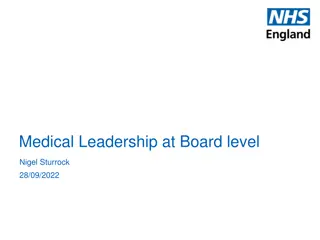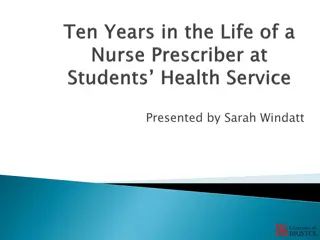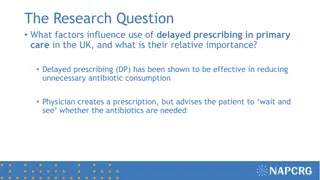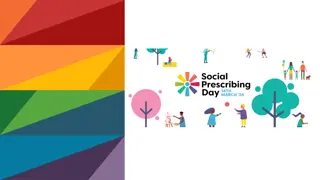Enhancing Skills and Leadership in Non-Medical Prescribing
Support and guidance for Non-Medical Prescribers (NMPs) in developing skills, leadership, and competence. Emphasis on scope of practice, safe prescribing, governance, and the impact on service development. Importance of clinical supervision, organizational factors, and prescribing leadership for high-quality, patient-centered care.
Download Presentation

Please find below an Image/Link to download the presentation.
The content on the website is provided AS IS for your information and personal use only. It may not be sold, licensed, or shared on other websites without obtaining consent from the author.If you encounter any issues during the download, it is possible that the publisher has removed the file from their server.
You are allowed to download the files provided on this website for personal or commercial use, subject to the condition that they are used lawfully. All files are the property of their respective owners.
The content on the website is provided AS IS for your information and personal use only. It may not be sold, licensed, or shared on other websites without obtaining consent from the author.
E N D
Presentation Transcript
Developing your skills and leadership as a prescriber Dr. Q. Wang Nurse Consultant Geriatrics Trust Lead for Non-Medical Prescribing 05.10.2022
Objectives Support Non-Medical Prescribers (NMP) need Developing your skills as a NMP Scope of Practice and safe prescribing Prescribing leadership-prescribing is integrated into service development Difference you can make to the service as a NMP Case study-older people s care
Support needed as NMPs Competency guidance-National prescribing competency framework (RCP, 2021). Local guidelines Individual organisation s NMP governance Clinical support from multi-professionals CPD support The drive for developing NMP is to provide high quality, patient-centred care where and when is needed within constricted financial recourses (NHS England, 2014)
Support needed as NMPs Trust Governance: a) Aims to ensure all NMPs are prescribing within the law, with Trust approval, compatible with service development, and provide benefits for patient care. b) Roles and responsibilities of NMPs; Designated Prescribing Practitioners (DPPs); Heads of Nursing(HoN), Divisional directors (DDs), NMP committee. c) Process for qualifying as a NMP d) Accountability and professional Indemnity of NMPs e) Safe prescribing monitoring(audit)
Developing skills as a NMP NMP competency/confidence Clinical supervision Organisational factors
Developing skills as a NMP Competency and confidence as a NMP Qualifying Competence Competence Confidence Confidence Competence
Scope of Practice and safe prescribing Self-awareness: strength/limitations ( within scope of practice) Team work: inter-professional and multi-professional Updated Knowledge and skills Shared learning Accountability Prioritise patient-centred care
Prescribing Leadership Systemic support to integrate NMP into service development Appropriate NMP governance Quality and safety of prescribing Support for NMPs education and CPD Robust clinical training for trainee NMPs Responsibility as DPP/supervisor/assessor Leadership to inspire and influence
Make difference through prescribing The ability to prescribe enhances the roles of non- medical workforce Improve patient care through facilitating patients safety and treatment Make a quicker and easier access for patients to get the medicines they need, improve clinical output
Case study 87 Yrs, George BG: A/w delirium, right sided abd pain radiates to his back; fast AF; AKI on CKD; USS: cholecystitis. PMH: Smoker 40/day for over 50 yrs CABG Gall stones CKD stage 3 PAF TIA HTN AAA repair
Case study SH: lives with wife, normally independent, mobile with a stick, still drives. DH: Ciprofloxacin/Metronidazole Clopidogrel Bisoprolol Simvastatin Morphine Heparin injection Omeprazole Ramipril
Case study Surgical Plan: IVI 6 hourly; IV Abx; Further radiology investigations, pain control, HR control Referred To COTE 3 days later: (despite inflammatory markers normalising, more confused, unwell) EWS: 5 BP: 110/50 P: 150 RR: 24; SPO2:96% on 3 L O2 T:37.8 OE: bi-basal crackles; BLL oedema; breathless; HR:120. BNP: 1350. CxR: Bil Pleural effusion, consolidation RLL, Cardiomegaly Echo: LVEF: 45% ( over 50% a yr ago) ECG: fast AF Diagnosis: Acute HF
Case study COTE Plan (medication review): Stop Morphine CHA2DS2-VASc Score (AF stroke risk): 5, needs coagulation treatment (warfarin commenced) Stop IVI, Fluid restriction 1.5L/day for 3 days Furosemide 40 IV stat, followed by 40mg Po daily Daily UEs, repeat Echo in 3months, COTE O.P follow up in 3 months.
Conclusion Prescribing is a process: Sound knowledge & skills within specialty Know the patient s Hx, presentation, PE, interpretation of laboratory tests/radiological examination results Clear diagnosis Management (phraseological/non-pharmacological) Close monitor and organising follow up Use prescribing framework as guideline Work with the team Patient-centred care
References NHS England (2014). Five year forward review. Accessed online at: www.england.nhs.uk. A competency framework for all prescribers (RPS, 2021). Online access (20.09.22): https://www.rpharms.com/resources/frameworks/pre scribing-competency-framework/competency- framework
